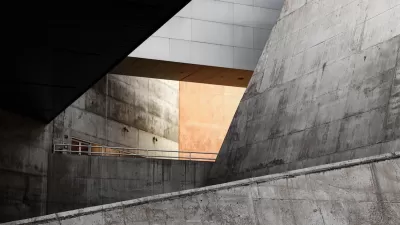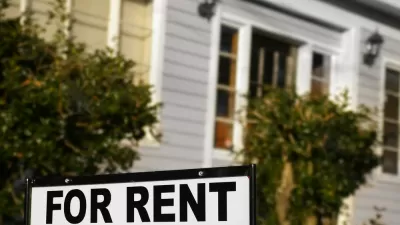As D.C.'s J. Edgar Hoover Building reaches the end of its 40 years of service as the headquarters of the FBI, one of the city's last examples of Brutalist architecture is getting little love from preservationists as discussion begin over its fate.
Several prominent preservation efforts of late (see the Orange County Government Center and Prentice Women's Hospital) have centered on the fate of Brutalist masterpieces of the 1960s and 70s. As preservationists, architecture critics, public officials, and the public debate the merits of saving these notoriously hard to love buildings, Jonathan O'Connell reports that preservationists in Washington D.C. are unlikely to put up much of a fight to save one of the iconic buildings of the Brutalist era.
The Hoover building was recently named the ugliest building on Earth by a travel Web site, and you won't find much argument from D.C. preservationists, many of whom are "still smarting from a very public and contentious debate to protect
another [Brutalist] D.C. building, the Third Church of Christ, Scientist, which they ultimately lost."
"There's not a lot of love for [the Hoover] building," said Rebecca Miller, executive director of the D.C. Preservation League. "And it's
such a primary piece of real estate that saving the building would be a
very difficult endeavor."
"Indeed, the [Preservation League's] chairman, John D.
Bellingham, president of Falls Church-based Monarc Construction, said
there was unlikely to be a similarly fierce battle for the Hoover
building as there was for the church," notes O'Connell.
"Is it a building that a lot
of people like? Probably not. Is it a building that people will try to
preserve? My instinct tells me probably not," he said.
FULL STORY: Preservationists back out before fight over FBI’s Hoover Building even begins

Planetizen Federal Action Tracker
A weekly monitor of how Trump’s orders and actions are impacting planners and planning in America.

Maui's Vacation Rental Debate Turns Ugly
Verbal attacks, misinformation campaigns and fistfights plague a high-stakes debate to convert thousands of vacation rentals into long-term housing.

San Francisco Suspends Traffic Calming Amidst Record Deaths
Citing “a challenging fiscal landscape,” the city will cease the program on the heels of 42 traffic deaths, including 24 pedestrians.

Amtrak Rolls Out New Orleans to Alabama “Mardi Gras” Train
The new service will operate morning and evening departures between Mobile and New Orleans.

The Subversive Car-Free Guide to Trump's Great American Road Trip
Car-free ways to access Chicagoland’s best tourist attractions.

San Antonio and Austin are Fusing Into one Massive Megaregion
The region spanning the two central Texas cities is growing fast, posing challenges for local infrastructure and water supplies.
Urban Design for Planners 1: Software Tools
This six-course series explores essential urban design concepts using open source software and equips planners with the tools they need to participate fully in the urban design process.
Planning for Universal Design
Learn the tools for implementing Universal Design in planning regulations.
Heyer Gruel & Associates PA
JM Goldson LLC
Custer County Colorado
City of Camden Redevelopment Agency
City of Astoria
Transportation Research & Education Center (TREC) at Portland State University
Jefferson Parish Government
Camden Redevelopment Agency
City of Claremont




























